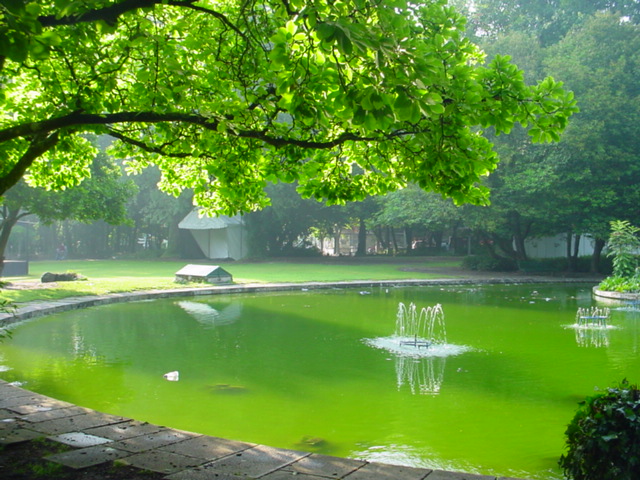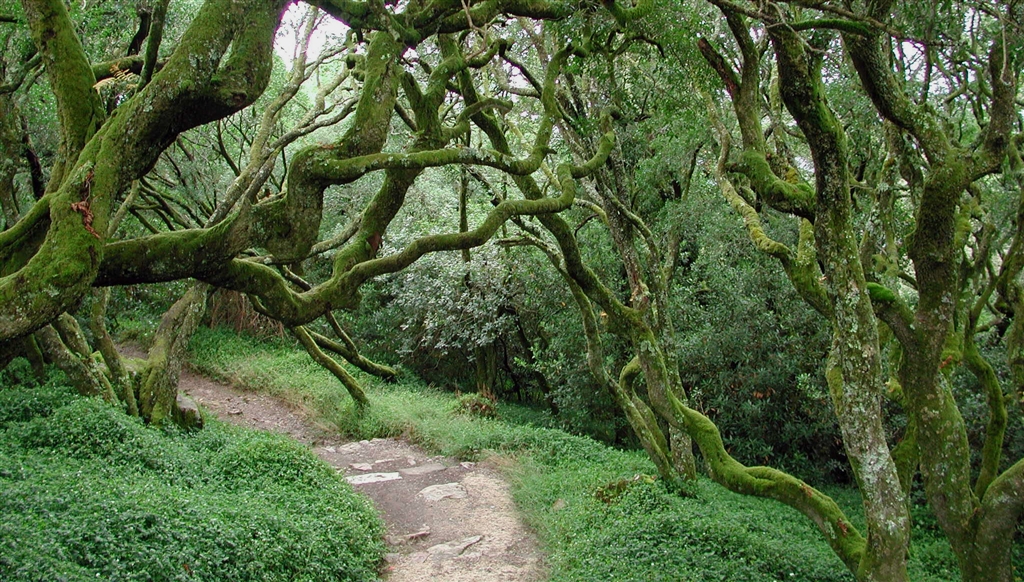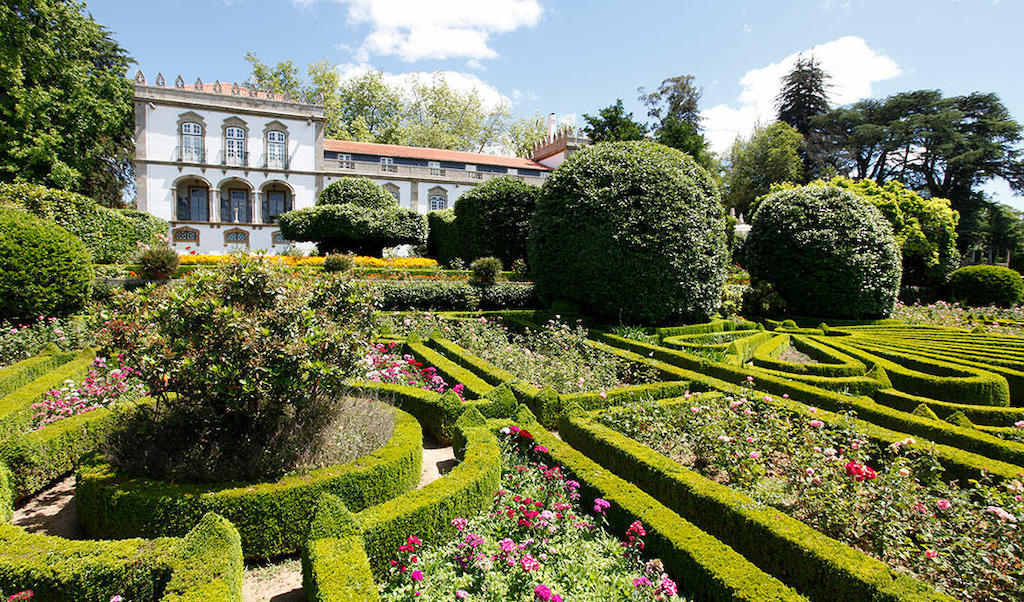Dão Region Garden Tour
In the beautiful Dão wine region, framed by mountains, you will find some of the most impressive and historical gardens in Portugal.
Discover these truly nature retreats and be surrounded by the tranquility of these beautiful places, that tell us stories of forbidden love, local legends, ancient battles, and victories.
Our Dão region garden tour blends architecture, landscapes, heritage, and delicious wines.
The Gardens of Quinta das Lágrimas
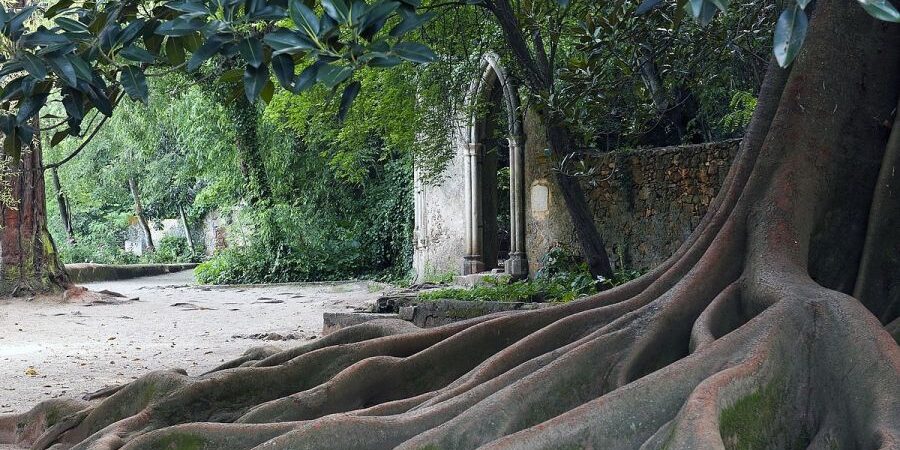
Before entering the Dão region, we suggest the first stop at Coimbra. In this ancient medieval city, you can find this beautiful garden, created to become a true herbal museum, gathering species from all over the world, and exotic plants, some of them over 200 years old.
Quinta das Lágrimas has been cited as the setting of the forbidden love between Portuguese King D.Pedro I and D.Inês de Castro, one of Portugal´s most famous and tragic love stories. The Gardens preserve a canal known as the “Cano dos Amores” (Love Canal). It is said that these waters carried love letters between the two lovers. According to the legend, the same waters turned red with the blood of D. Inês de Castro, who was murdered here.
At the Quinta das Lágrimas estate, you will find a magnificent 19th-century palace, that now operates as a luxury hotel.
Buçaco Woods
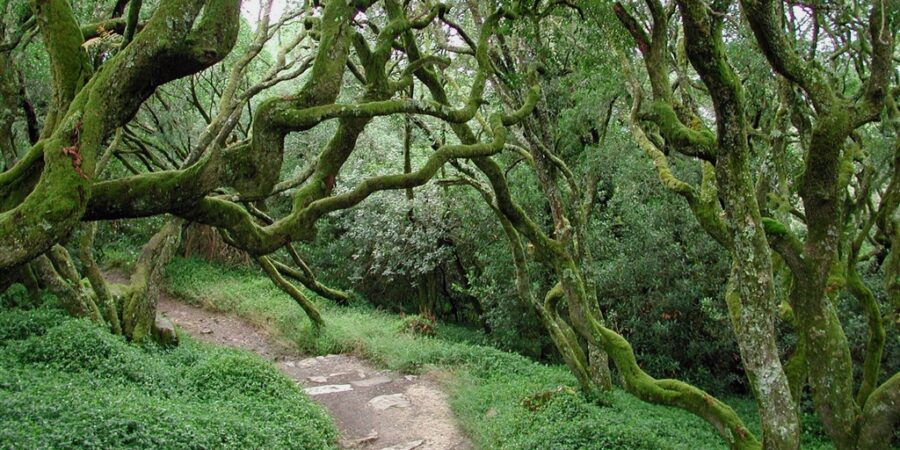
A majestic and mysterious forest, the Buçaco Mountain is one of Portugal´s most beautiful and peaceful places. At the far end of Buçaco Mountain, in the Bairrada wine region, you will find Buçaco Woods, a fresh and quiet place to take a stroll along. The wood invites you to discover its beauty and serenity.
Here you will find some well-identified pedestrian paths, all of which will lead you to places of intense green color, lakes, fountains, and luxuriant vegetation. And after your walk, take a rest at the Bussaco Hotel Palace, one of the most beautiful neo-Manueline-style buildings in Portugal.
Buçaco Mountain is a place of quietness, but it was also a land of battles and conquers. It was the site of a famous battle in which the Portuguese defeated the French army, in the 19th century.
Immerse yourself in the flora and the History of this place.
Aquilino Ribeiro City Park
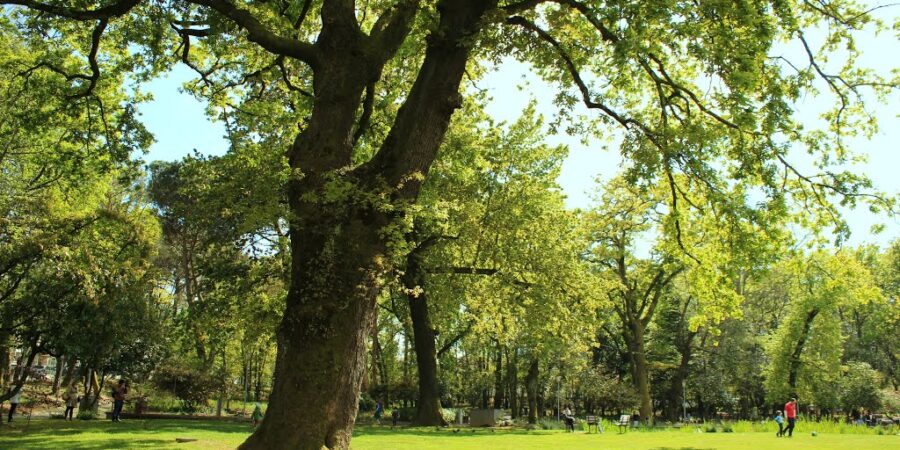
The Aquilino Ribeiro city park, in Viseu, is a hundred years old and it was part of the Quinta do Maçorim, where the Santo António dos Capuchos monastery was built in 1653. It is considered the lung of the city of Viseu. Its impressive oaks were planted by the hooded Franciscan monks in the hedge that surrounded the monastery.
A curious fact is that this is also a sensory garden, with Braille signs, allowing blind people to touch, smell, and feel the flowers.
A beautiful urban park to visit, relax, go for a walk, and breathe the fresh air. And make sure you take some time aside to explore Viseu, a city with 2500 years of history.
Casa de Ínsua Gardens
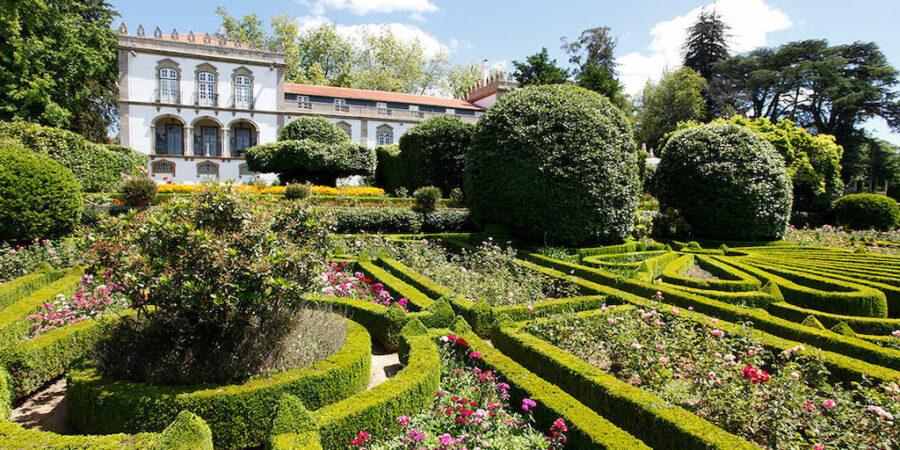
Located in Penalva do Castelo, at the heart of the Dão wine region, and with a connection to Serra da Estrela Natural Park, Casa da Ínsua is a magnificent palace, one of the most exclusive examples of Baroque style. It is also famous for its astonishing 18th-century gardens with a wide variety of botanical species. The most remarkable ones are the French Garden and the English Garden.
Inside this impressive property, which operates as a luxury boutique hotel, you will find a museum, and beautiful vineyards, and you can learn more about the production of the delicious Serra da Estrela cheese.
The perfect destination for a few relaxing days.
Bishop´s Palace Garden
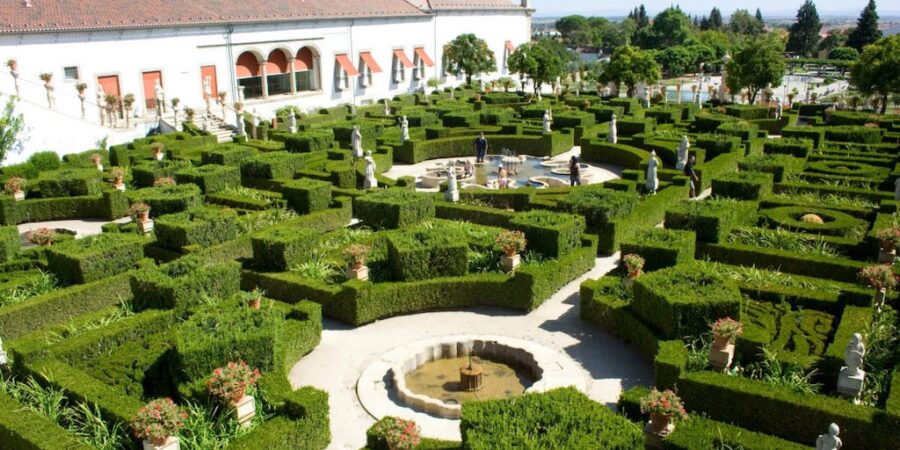
The town of Castelo Branco, located in the frontier, was founded at the base of a Templar castle, in the 13th century, and it is worth visiting.
The Bishop´s Palace Garden in Castelo Branco is one of the most original examples of the Baroque style in Portugal. This beautiful garden is dominated by balconies and verandas with iron guards and stone balusters. Among the elegant bush, stand symbolic status in granite representing the New Men, the Four Cardinal Virtues, The Three Theological Virtues, the Zodiac, the Parties of the World, the Four Seasons, Fire, and Haunting.
Arranged like a staircase, there are representations of the Apostles and the Kings of Portugal, up to D.José I. At the upper level of the garden, you will find statues depicting the Old Testament and the water as a symbol of a purifying element.
Continue your discovery of this city reaching the medieval castle that gave Castelo Branco its name and enjoy the perfect view of the city.
These are some of the most beautiful gardens in Portugal. Please contact us if you want to know more about our garden tours in Portugal



